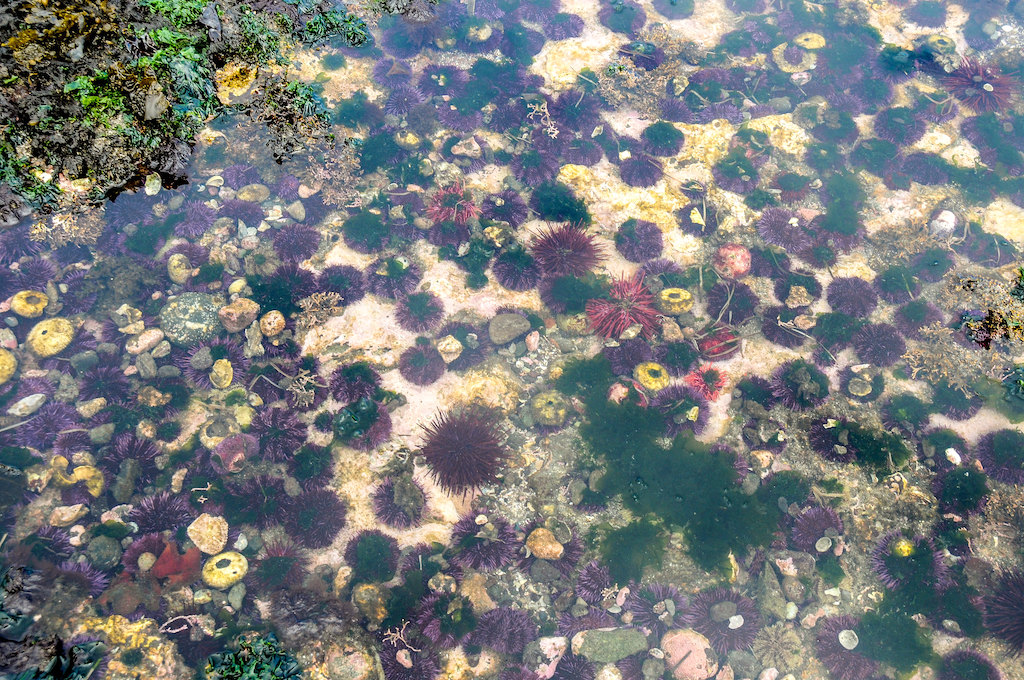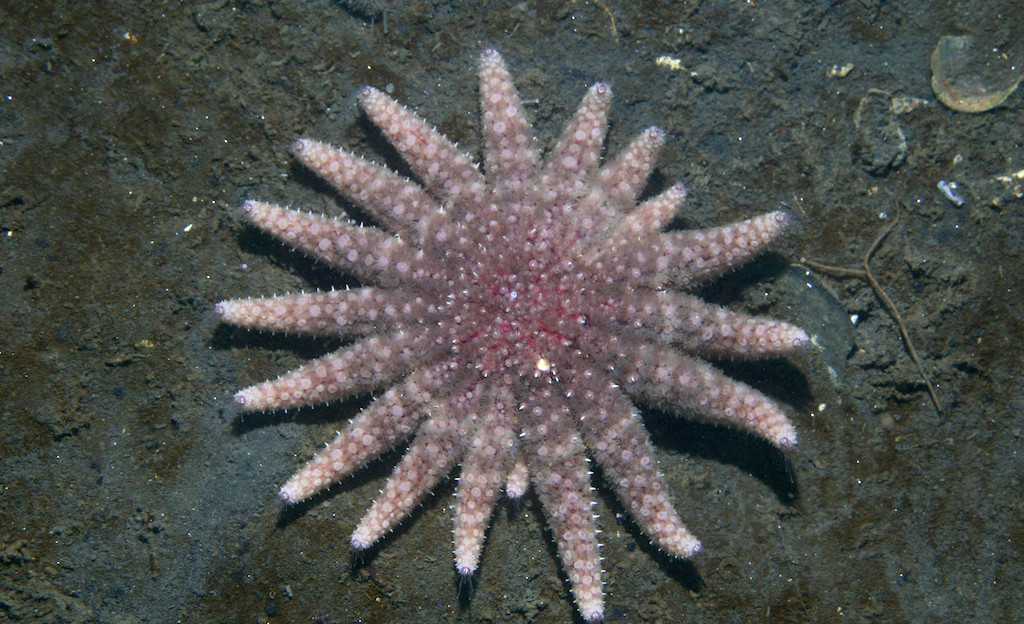Once abundant along the west coast, the sunflower sea star has fascinated researchers and the public with its size, speed, and stunning coloration. It is one of the largest and fastest starfish in the world, with sizes reaching up to one meter in diameter spanning over 16-24 individual arms.
It is also one of the species hit the hardest by the 2013 outbreak of sea star wasting disease, which decreased the population size by 90% in the Salish Sea.
That decline landed sea stars on the IUCN Red List of Threatened Species, and researchers say it has also caused problems for other species like kelp that rely on the starfish to maintain the balance of the food web. Hungry sea stars normally eat urchins that feed on kelp, but with fewer predators, urchins have been devastating some kelp populations in the Salish Sea.
Hungry babies
As researchers work to restore the ecological balance, they are finding that the early life stages of sea stars may be especially important. New observations from Jason Hodin’s captive breeding program at Friday Harbor Laboratories show that young, juvenile sunflower sea stars (Pycnopodia helianthoides) are eating juvenile sea urchins, and these baby stars might be having a bigger impact on urchin population control than the adults.

Red and purple sea urchins. Photo: John Leszczynski (CC BY-SA 2.0)
Hodin and his team have observed the juvenile sunflower sea stars eating a hearty diet of juvenile urchins. According to Hodin, “when the juvenile size of the sunflower stars gets up to about 5 or 6 millimeters, they can eat as many as five, six, or seven juvenile urchins per day, unlike the adults which are maybe eating about one urchin a day.” This is ecologically important because it indicates that sunflower sea stars are exhibiting top-down predation on urchins throughout their entire life cycle. Such observations open avenues for future research on food web interactions in kelp forests and can help scientists better understand urchin population control and predation from sunflower sea stars.
These lab-based efforts have not only aided in recovery efforts, but have also resulted in new and novel observations about these young juveniles. Although more research is needed, the scientists say, these preliminary observations on juvenile feeding offer insight into important ecological interactions and might hold the key to better understanding urchin control and kelp forest recovery.
This article was inspired by findings presented at the 2022 Salish Sea Ecosystem Conference.



